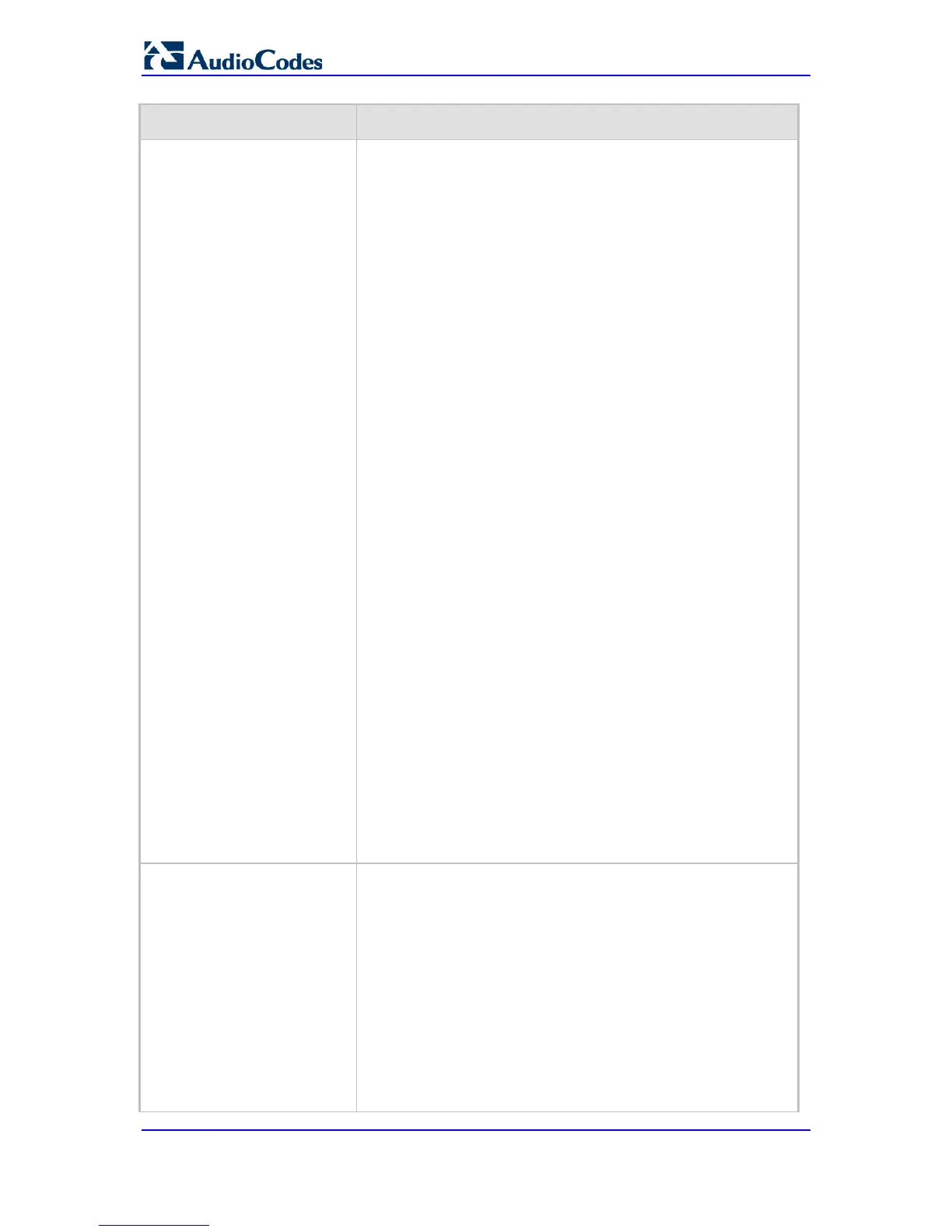In newer QSIG standards, the channel-id range is 1 to 30,
but the timeslot range is still 1 to 15 and 17 to 31. The D-
channel is not identified as channel-id #16, but is still
carried into the timeslot #16.
When this bit is set, the channel ID #16 is considered as a
valid B-channel ID, but timeslot values are converted to
reflect the range 1 to 15 and 17 to 31. This is the new
QSIG mode of operation. When this bit is not set (default),
the channel_id #16 is not allowed, as for all ETSI-like
standards.
[64] USE T1 PRI = PRI interface type is forced to T1.
[128] USE E1 PRI = PRI interface type is forced to E1.
[256] START WITH B CHAN OOS = B-channels start in the
Out-Of-Service state (OOS).
[512] CHAN ALLOC LOWEST = CC allocates B-channels
starting from the lowest available B-channel id.
[1024] CHAN ALLOC HIGHEST = CC allocates B-channels
starting from the highest available B-channel id.
[16384] CC_TRANSPARENT_UUI bit: The UUI-protocol
implementation of CC is disabled allowing the application to
freely send UUI elements in any primitive, regardless of the
UUI-protocol requirements (UUI Implicit Service 1). This allows
more flexible application control on the UUI. When this bit is
not set (default behavior), CC implements the UUI-protocol as
specified in the ETS 300-403 standards for Implicit Service 1.
[65536] GTD5 TBCT = CC implements the VERIZON-GTD-5
Switch variant of the TBCT Supplementary Service, as
specified in FSD 01-02-40AG Feature Specification Document
from Verizon. Otherwise, TBCT is implemented as specified in
GR-2865-CORE specification (default behavior).
Note: When using the ini file to configure the device to support
several ISDNGeneralCCBehavior features, add the individual
feature values. For example, to support both [16] and [32]
features, set ISDNGeneralCCBehavior = 48 (i.e., 16 + 32).
Web/EMS: Outgoing Calls
Behavior
CLI: isdn-bits-outgoing-calls-
behavior
[ISDNOutCallsBehavior]
Determines several behaviour options (bit fields) that influence
the behaviour of the ISDN Stack outgoing calls. To select options,
click the arrow button, and then for each required option, select 1
to enable. The default is 0 (i.e., disable).
[2] USER SENDING COMPLETE =The default behavior of the
device (when this bit is not set) is to automatically generate the
Sending-Complete IE in the Setup message. This behavior is
used when overlap dialing is not needed. When overlap dialing
is needed, set this bit and the behavior is changed to suit the
scenario, i.e., Sending-Complete IE is added when required in
the Setup message for Enblock mode or in the last Digit with
Overlap mode.
[16] USE MU LAW = The device sends G.711-m-Law in

